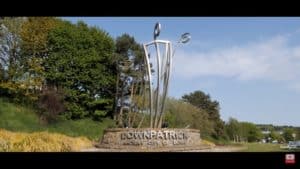Language Revival Movements: Tracing the Rejuvenation of Hebrew and Hawaiian

Updated On: April 22, 2024 by Panseih Gharib
Language revival movements represent a profound response to the erosion of linguistic diversity worldwide. These efforts aim not only to reclaim a vital aspect of cultural identity but also to empower communities by reconnecting them with their ancestral tongues. The revival of Hebrew is a prominent example of such efforts, having reemerged as a living language after centuries of being primarily a liturgical language. Hebrew’s revitalisation has set a precedent, illustrating that with cohesive community efforts, political will, and educational reform, a language can transition from the sacred to the street and flourish once again.
In parallel, the Hawaiian language revival movement has seen significant strides since the late 20th century. Following a period of decline due to colonial influences and suppression of native languages, ‘Ōlelo Hawai’i has experienced a resurgence, primarily due to comprehensive language revitalisation programs. These programs, often rooted within local communities and supported by academia, exemplify how language can be a vessel for cultural renewal, community cohesion, and identity restoration for indigenous peoples.
Historical Context of Language Decline
We observe that throughout history, language decline often correlates with sociopolitical and cultural changes. Indigenous and minority languages in diverse cultures around the world have experienced decline due to forces such as assimilation policies, where dominant groups impose their language and culture on others.
In many cases:
- Colonialism: European colonisers, such as the British and French, often enforced their own languages upon the people they ruled. This was part of a broader strategy to cement their control and assimilate indigenous populations into the colonial culture.
- Missionaries: Religious missionaries introduced new languages when they sought to convert local populations. Their influence sometimes resulted in a shift towards the missionaries’ languages at the expense of indigenous ones.
We’ve seen that language shift occurs when a community gradually adopts a different language, often a more prestigious or dominant one, for everyday use. In late modern societies, the globalisation of certain languages, such as English, has increased pressure on smaller languages.
Here are some contributing factors to language decline:
| Factor | Description |
|---|---|
| Economic advantages | Majority languages often provide greater economic opportunities, leading to gradual abandonment of minority languages. |
| Educational systems | Curriculums centred on major languages can reduce the transmission of local languages to younger generations. |
| Media | Predominance of content in widespread languages can marginalise others. |
Assimilation and suppression tactics have historically led many speakers of indigenous languages to adopt a new tongue, sometimes voluntarily but often under duress. Communities’ resilience to keep their languages alive despite these challenges is remarkable and has paved the way for revitalisation efforts in recent times.
Revival of the Hebrew Language
The Hebrew language’s extraordinary journey from ancient liturgy to modern vernacular showcases the power of language revitalisation. It stands as a profound example of how a language with no native speakers can become an official language of a state intimately tied to the Zionist movement.
Zionism and Hebrew Revitalisation
We can’t discuss the revival of Hebrew without mentioning the pivotal role of Zionism. This nationalist movement fostered a strong sentiment for Jews to return to their homeland and restore their cultural and linguistic unity. Eliezer Ben-Yehuda, a key figure in the Zionist movement, was instrumental in this development; he and his colleagues took groundbreaking steps, such as using Hebrew exclusively in their everyday conversations, which began solidifying the language’s return to common use.
- Home: Ben-Yehuda insisted Hebrew be spoken at home.
- School: Schools were to teach in Hebrew.
- Lexicon: The creation of new words was essential to modernise the language.
The impact of these actions was monumental. They led to the widespread adoption of Hebrew as both a spoken and written means of communication among Jews, further uniting the burgeoning nation.
Modern Hebrew: Successes and Challenges
Today, Hebrew is a living, breathing tongue with millions of native speakers. This transformation from a historical language of scripture to a modern one is unparalleled. Hebrew’s success lies in systematic language planning, education policies ensuring its transmission to new generations, and the strong cultural identity it provides.
However, the vibrancy of modern Hebrew doesn’t come without its challenges. Balancing historical authenticity with the demands of modern communication continues to be an ongoing effort. This includes:
- Adapting to technology: Ensuring that Hebrew can competently handle the digital age’s linguistic requirements.
- Integration of loanwords: This involves deciding how much influence other languages, particularly English, can exert on the Hebrew lexicon.
Our examination of the revitalisation process endorses the perspective that with dedication, a language can not only be revived but can flourish as the cornerstone of a nation’s identity.
Hawaiian Language Revival
In recent decades, the Hawaiian language has seen a remarkable resurgence. These efforts represent a powerful testament to the resilience of Native Hawaiian culture and the community’s dedication to reclaiming their linguistic heritage.
The Hawaiian Renaissance
The revival of the Hawaiian language is intricately linked to a broader cultural revitalisation movement that began in the 1960s and 1970s. Termed the Hawaiian Renaissance, this period marked a resurgence of interest in and practice of traditional Hawaiian arts, music, dance, and language. Crucially, this renaissance was a response to over a century of suppression, where the use of Hawaiian was discouraged and stigmatised in favour of English.
Pūnana Leo: The Rebirth of a Native Tongue
In the vanguard of the language revival efforts is the Pūnana Leo movement, which translates directly as “a nest of voices”. It inaugurated a network of Hawaiian medium preschools, starting from the mid-1980s, intending to immerse keiki (children) in the language, ensuring its transmission to new generations. Pūnana Leo schools have played a vital role in not just teaching the language but also in embedding it within the context of Native Hawaiian culture and values.
The establishments under the Pūnana Leo umbrella represent the backbone of the Hawaiian language revitalisation programme, promoting its use across all facets of life—from education and government to media and daily conversation, thus breathing new life into what was a critically endangered tongue. Their efforts have instilled a sense of pride and identity amongst Hawaiians, contributing to a broader understanding and appreciation of the unique linguistic and cultural heritage of Hawaii.
Language Revitalisation Strategies
Successful language revitalisation hinges on actively employed strategies that respond to past suppression and encourage future growth.
Education and Curriculum
We recognise that the foundation for language transmission and maintenance lies within education systems. Immersion schools have become pillars in revitalising languages such as Hebrew and Hawaiian. For Hawaiian, immersion schooling enables children to learn the language within academic settings, intertwining Hawaiian culture and identity with education. Curriculum development plays a critical role in ensuring that lesson plans resonate with the cultural context and contribute to language maintenance.
Media and Technology
Equally important is the utilization of media and technology to promote language recovery. In Hawaii, efforts include radio shows and digital platforms that have proved pivotal in broadening the reach to both local and global audiences. These mediums allow for a diverse range of interactive content, from apps to podcasts, that facilitate language learning and use in everyday contexts, further embedding the language into modern life.
Community and Identity
The heart of language revitalisation lies within community and identity. By fostering a strong sense of pride among Hawaiian language speakers and encouraging the government’s support, we see a fortified bond between language and identity. Community-driven initiatives, often supported by legislation, create environments that are conducive to intergenerational language transmission, thereby strengthening Hawaiian culture and the identity of its people.
Impact on Indigenous Peoples

Language revival movements have transformed the cultural landscapes of Indigenous communities. We have observed the profound effect these efforts have had, particularly on well-being and identity. Through the revitalisation of languages, we see native speakers reclaiming a crucial part of their heritage.
In North America, for instance, efforts to bring back languages on the brink of extinction have imbued Native American communities with a strong sense of pride and cultural coherence. The Navajo language is a shining example of a successful revival, with a substantial number of speakers contributing to its strength among Indigenous languages.
For many Indigenous peoples, language is an intrinsic part of their identity. It embodies the unique perspectives and knowledge of their ancestors, tying them to their past, guiding their present, and informing their future.
| Area of Impact | Description |
|---|---|
| Well-being | Improved mental health and social cohesion |
| Identity | Strengthened cultural identity and community bonds |
| Revitalisation | Preservation and teaching of Native languages |
Moreover, we have seen that language revitalisation can be a potent means to promote Indigenous languages worldwide. The revival of Hebrew demonstrates the potential for a language to be both modernised and widely adopted across generations, serving as an inspiration for other language revival initiatives.
We have learnt that these movements are not merely about language metrics but have profound implications for preserving the diverse tapestries of human culture. By maintaining and fostering linguistic diversity, we contribute to the cultural richness and sustainability of our global heritage.
Success Factors in Language Revival
In reviving a language, strategic factors play a crucial role, particularly governmental support and effective methods to create new speakers. We’ll explore each of these areas to understand how they contribute to the success of language revival movements.
Government Policy and Support
Governmental backing is vital for the revitalisation of languages. Policies and support can manifest in various forms, such as funding for education programmes, the official recognition of the language, and support for media content in the target language. For instance, the revival of the Hebrew language was significantly aided by the Zionist movement’s decision to adopt Hebrew as the official language of Israel, which demonstrated a key sociolinguistic strategy. Similarly, in Wales, the Welsh Government’s support has been instrumental in the comeback of the Welsh language through the enactment of the Welsh Language Act 1993 and subsequent measures.
Creating New Speakers
The production of new speakers, or “neophyte speakers”, lies at the heart of any language revival movement. This is achieved through education and community engagement. Programmes like language nests, immersion schools, and adult language courses are effective methods. For example, the revival efforts of the Hawaiian language have been grounded in creating new speakers through the establishment of the Punana Leo preschools and K-12 schooling provided by the Kamehameha Schools. These institutions have played a pivotal role in the Hawaiian language’s resurgence, contributing to both academic success and increased numbers of fluent speakers in younger generations.
Technological Advancements and Language Revival
Language revival efforts have been greatly enhanced by technological advancements. Such progress includes digital media, audio broadcasting, and online platforms. We’ve witnessed the profound impact that these tools have on reconnecting communities with their linguistic heritage.
Broadcasting: Radio programmes have been a traditional medium for language revitalisation. For instance, the Hawaiian language owes part of its revival to the radio program Ka Leo Hawai’i, which began airing engaging content in Hawaiian in the 1970s. This initiative provided a platform for native speakers and learners to hear and practice the language regularly.
Internet and Mobile Technologies: With the advent of the Internet, resources for learning and using endangered languages have become more accessible. Online courses, mobile applications, and social media facilitate interactive and self-paced language learning opportunities.
Digital Archives: Audio and video recordings of native speakers are now digitally archived, preserving linguistic details for future generations. This archival work is essential for languages with few remaining speakers.
Software: Cutting-edge software allows for the creation of dictionaries, translation services, and speech recognition in revitalised languages. These tools support not only language learning but also its daily use in modern contexts.
Technology has simplified individuals’ participation in language revival. These innovations not only aid in the preservation of languages but also enable the cultural expression and identity they embody to flourish.
- Outreach: Increased global connectivity means diverse languages can gain international attention and support.
- Community Building: Technology fosters communities of learners and speakers, creating a space for cultural exchange and language practice.
Sociocultural Effects of Language Revival Efforts
Language revival movements are not merely about reclaiming words and grammar; they echo deeply through our sociocultural fabrics. When we breathe life into a language, we’re also revitalising the cultural practices, traditions, and identities intertwined with it.
The revitalisation of Hebrew, for instance, was a pivotal movement, leading to the language’s emergence as a symbol of identity and unity for the Jewish people. By constructing a vibrant ecosystem around Hebrew, its speakers cultivated a unique sociopolitical identity that contrasted with the dominant cultures of the time.
This renewal, however, does not occur in isolation. It often challenges existing linguistic hierarchies. Take English and Japanese, for instance, which dominate in the realms of business and technology. The re-introduction of a revived language into such domains can disrupt these well-established dynamics and promote multiculturalism.
Moreover, in the language ecological environment, each language is a habitat of knowledge and wisdom. Revival efforts often lead to a bi-directional enrichment, where the reinstated language contributes to diversity and the global community also enriches the language with new domains of use.
These efforts extend beyond linguistic boundaries to redefine the social and cultural landscape. The Hawaiian language revival, for example, is not just a linguistic endeavour but a reassertion of Hawaiian sovereignty and spirituality and a means to heal historical wounds.
- Cultural Autonomy: Revived languages allow communities to assert their autonomy and distinctive cultural narratives.
- Intellectual Sovereignty: They promote local knowledge and philosophies, creating space for intellectual diversity.
- Spirituality & Wellbeing: Language is deeply connected to spirituality and overall communal health.
Through our commitment to linguistic diversity, we help ensure that the tapestry of human culture remains as vibrant and diverse as the ecosystems we strive to protect.
Revival Efforts in Other Language Ecologies
In the sphere of language revitalisation, varied approaches have been adopted to nurture the growth of indigenous languages. These efforts often transpire within complex language ecologies that include speakers, educators, activists, and policy frameworks.
Māori Language Revival
In New Zealand, the Māori language, also known as Te Reo Māori, has seen concerted revival efforts. Initiatives such as the establishment of Kohanga Reo and early childhood education centres play a pivotal role. These institutions foster an environment where Māori is the primary language of instruction, creating a natural setting for the language to thrive amongst the youngest members of the community.
Native American Languages
In North America, many Native American languages are experiencing their own renaissance. Revitalisation projects are frequently community-driven, with an emphasis on intergenerational transmission. Immersion schools and language nests are instrumental in reviving languages such as Navajo and Chickataw, though the challenges each language faces are unique within their respective ecologies.
Challenges and Criticisms of Revival Movements
Language revitalisation is a meticulous process, compounded by a multitude of challenges that often invite criticism. First, revitalisation efforts must navigate the sociolinguistic situation of communities, wherein the dominant language, often English, can overshadow the minority language being revived. This hegemonic presence creates an environment where resources and opportunities to use the revitalised language are limited.
- Identity and Authenticity: Questions arise regarding the authenticity of the revived language and its connection to the community’s identity. Critics argue that revived languages may lose aspects of their original context and evolve differently from their historical counterparts.
- Community Engagement: Successful language revitalisation requires robust community engagement. Without the active participation of native speakers or descendants, efforts may fall short.
- Economic Constraints: Financial investment is crucial, yet funding can be limited, and the economic benefits are not always immediately apparent, leading to questions about the allocation of resources.
- Educational Resources: The creation of effective educational materials and programmes is another hurdle. Teachers proficient in the language are essential, yet they are typically scarce.
- Intergenerational Transmission: Perhaps the most poignant challenge is restoring the intergenerational transmission of the language. A break in this transmission can leave a lasting impact, and re-establishing it is a complex process that requires time and patience.
By grappling with these obstacles, we strive to strike a balance between honouring linguistic heritage and adapting to contemporary realities. Our mission is to harness lessons from these challenges to enhance our methodologies in language revitalisation.
The Future of Language Revival Movements
Language revival movements are a testament to the resilience of cultural identity and the unyielding desire of communities to reclaim their linguistic heritage. As we move into the future, these movements face various challenges but also embrace new opportunities through enhanced technology, global networks, and educational reforms.
One shining example is the Hawaiian language revitalisation, which has transformed from a dire situation to a model of success. The establishment of Hawaiian-medium schools and the University of Hawaii’s commitment to creating a Hawaiian-speaking environment exemplify the pivotal role education plays in language revival.
In the coming years, we envisage that the language revival network will continue to spread, connecting communities and fostering exchanges of methodologies. This network can significantly increase collaborative efforts and share resources on a global scale, thereby enhancing the effectiveness of language revival initiatives.
Technology, too, will play a crucial role. Digital tools and online platforms can facilitate access to learning resources, connect speakers across distances, and create spaces where endangered languages live and thrive. These advances will empower not just learners but also educators and activists involved in language revival movements.
Ultimately, our focus must include ongoing support to educational institutions, such as nurturing Hawaiian-medium educational settings and incorporating indigenous languages into curricula at all levels of learning. By investing in these key areas, we can help ensure that languages once on the brink of extinction continue to be spoken, celebrated, and preserved for future generations.
FAQ
We’ve gathered some of the most common questions about language revival movements. These touch upon historical successes, methodologies, and the impact these movements have within sociolinguistics.
What are notable examples of successfully revived languages besides Hebrew?
Cornish and Manx are examples of revitalised languages. The efforts involved a combination of community dedication and institutional support, which led to a gradual increase in the number of speakers, especially in educational settings.
How did the revival process contribute to modern Hebrew’s widespread use in Israel?
The modern Hebrew revival was remarkable due to strategic educational programmes and the establishment of Hebrew as the lingua franca in diverse communities of Israel. This move was reinforced by its use in all aspects of daily life, effectively transforming it from a sacred language to a spoken one.
Are there instances of a completely extinct language being successfully revived?
No language has been completely revived from extinction on the same scale as Hebrew. However, there have been efforts to reconstruct languages that have no living speakers, such as Latin and Ancient Greek, primarily for scholarly and liturgical purposes.
What role does language revival play in the field of sociolinguistics?
Language revival is crucial in sociolinguistics as it involves the processes of language change and social aspects of language use. Analysing revival movements provides insights into how languages can be maintained or reshaped within communities.
Which language revitalisation efforts are considered among the most effective, and what factors contributed to their success?
One of the most effective revitalisation efforts has been the revival of the Hawaiian language, with key elements including educational programmes, government support, and the establishment of immersion schools. A strong community movement towards celebrating Hawaiian culture contributed significantly to this success.
Why is the Hebrew language often cited as a prime example of linguistic revival?
The Hebrew language is cited as a prime example of linguistic revival due to its transition from a historical liturgical language to a living language with millions of native speakers, embedding itself in all facets of a nation’s identity and daily communication.






